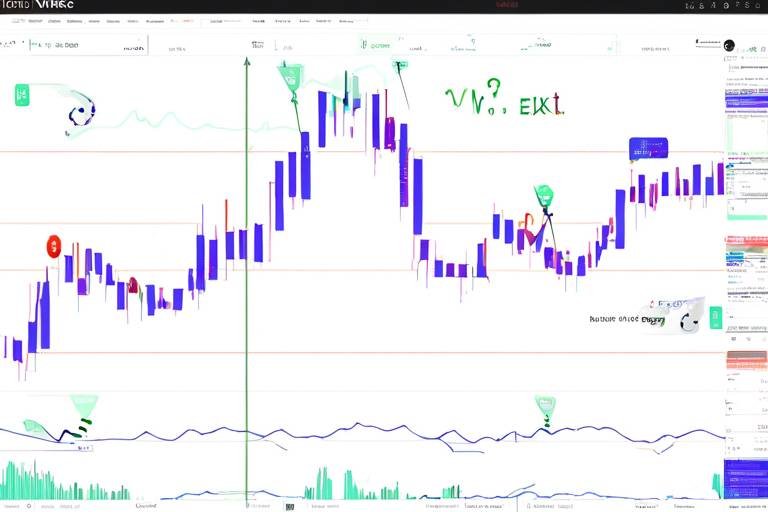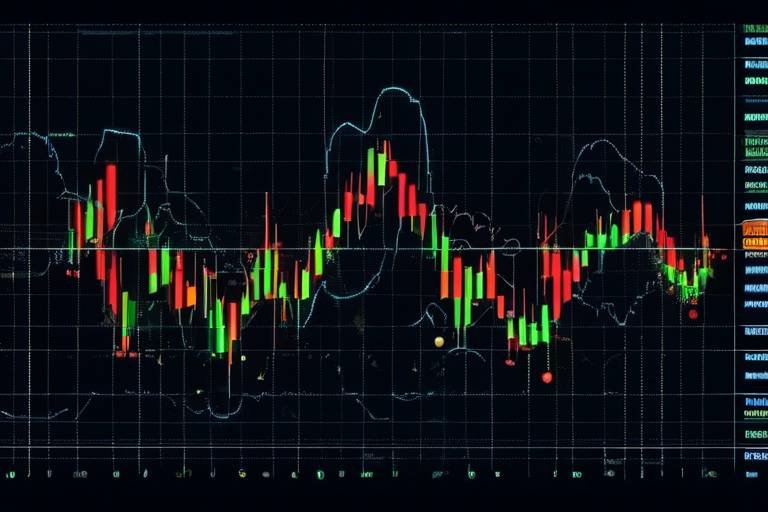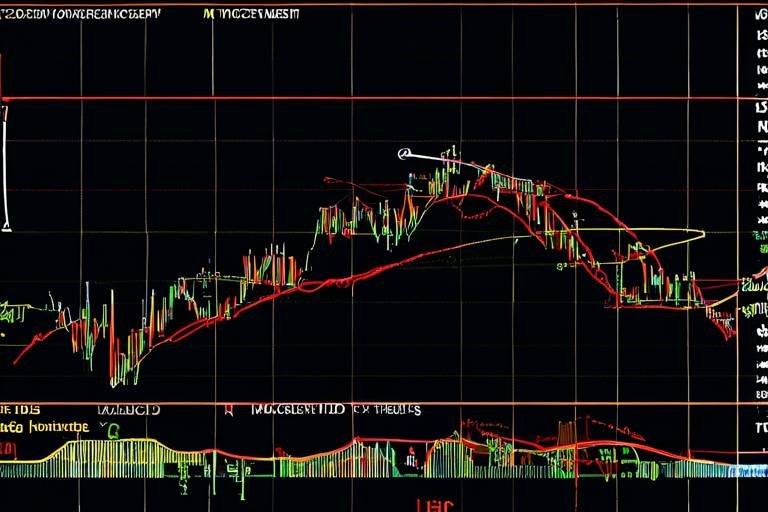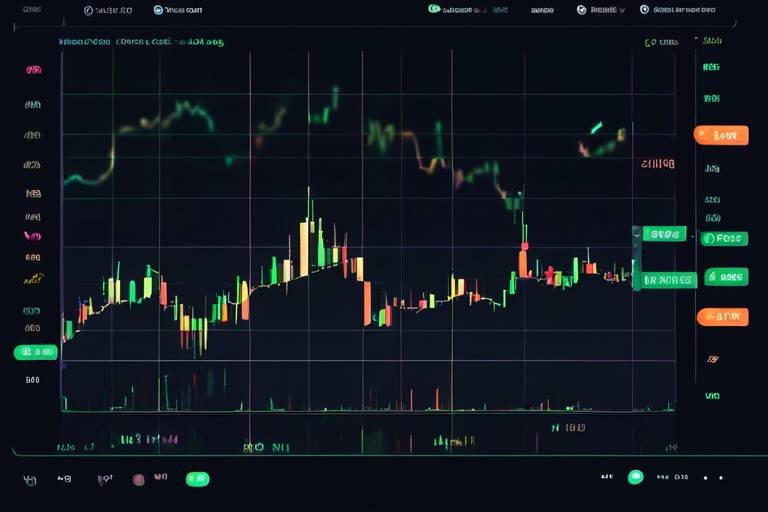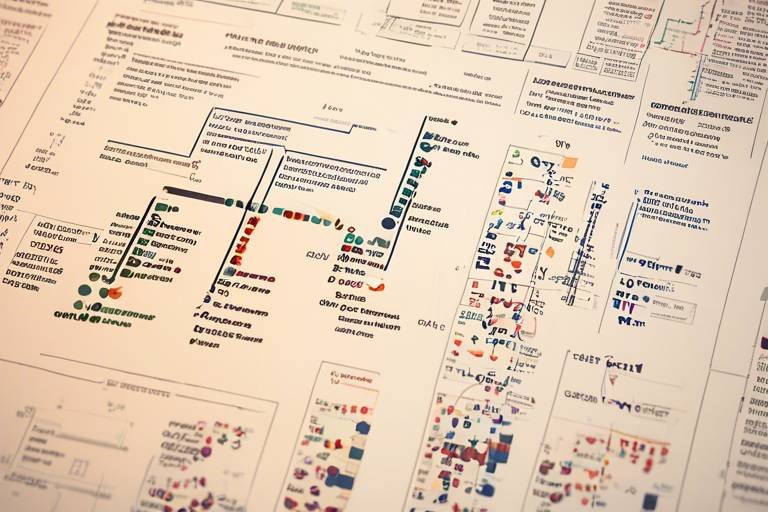How to Develop a Successful Day Trading Strategy
Day trading can be an exhilarating yet challenging endeavor. It’s like riding a roller coaster where every twist and turn can lead to thrilling highs or gut-wrenching lows. To navigate this fast-paced world successfully, you need a robust strategy that encompasses various aspects of trading. In this article, we will explore the essential components of a successful day trading strategy, including market analysis, risk management, and the psychological factors that can make or break your trading success.
Recognizing market trends is crucial for day traders. It’s like having a compass in the wilderness—without it, you could easily get lost. There are three primary types of trends: upward, downward, and sideways. Each trend tells a different story about the market's direction and potential future movements. For instance, an upward trend indicates a growing market where prices are rising, while a downward trend suggests the opposite. Sideways trends can be tricky, as they often signal indecision among traders.
To identify these trends, traders often rely on tools like trend lines and moving averages. These tools act as visual aids, helping you see where the market has been and where it might be headed. Understanding trends is not just about recognizing patterns; it’s about making informed decisions that align with the market's direction. After all, why swim against the current when you can ride the wave?
Technical analysis tools are the bread and butter of day trading. They help traders make informed decisions based on historical price data and market behavior. Popular tools include moving averages, Relative Strength Index (RSI), and candlestick patterns. These tools can enhance your trading strategies significantly. For example, moving averages smooth out price data to help identify trends, while RSI indicates whether a market is overbought or oversold.
Chart patterns provide visual cues for potential market movements, acting like a roadmap for traders. Common patterns include:
- Head and Shoulders: This pattern often indicates a reversal in trend.
- Flags: These suggest a continuation of the current trend.
- Triangles: These can signal a breakout in either direction.
Understanding these patterns can give you a competitive edge, allowing you to anticipate market movements and make timely trades. It’s like having a crystal ball that reveals potential future scenarios.
Support and resistance levels are critical in day trading. They act as psychological barriers where prices tend to bounce back or break through. Identifying these levels can help you predict price movements and make better trading decisions. For instance, if a stock consistently bounces off a specific price level, that level is considered support. Conversely, if it struggles to rise above a certain price, that's resistance. Knowing these levels can help you set entry and exit points effectively.
Volume analysis complements price movements, providing insights into the strength of a trend. High trading volume often confirms a trend, while low volume may indicate weakness. Analyzing volume can help you gauge whether a price movement is likely to continue or reverse. It’s like listening to the crowd at a concert; if the cheers are loud, the energy is high, and the show is likely to go on.
Indicators and oscillators assist in gauging market momentum. Key indicators like the Moving Average Convergence Divergence (MACD) and Bollinger Bands can provide valuable insights into market conditions. Incorporating these tools into your trading strategies can help you make more informed decisions and improve your overall performance.
Effective risk management is vital for long-term success in day trading. It’s like wearing a seatbelt while driving; it won’t prevent accidents, but it can save you from serious harm. One of the most important aspects of risk management is knowing how much capital to risk on each trade. A common rule of thumb is to risk no more than 1-2% of your trading capital on a single trade. This way, even a series of losses won’t significantly impact your overall portfolio.
Stop-loss orders are essential for limiting losses. Setting effective stop-loss levels based on market conditions and your personal risk tolerance can provide a safety net during volatile trading sessions. It’s like having a safety net in a circus act; it allows you to take risks while knowing you have a cushion to fall back on.
Diversification can mitigate risk in day trading. By spreading your investments across various assets, you reduce the likelihood of a significant loss. Remember, don’t put all your eggs in one basket. This strategy not only protects your capital but also opens up opportunities for profit in different market conditions.
The psychological mindset of a trader can significantly impact performance. Trading is not just about numbers; it’s about emotions and discipline. Common psychological challenges include fear of loss, overtrading, and the temptation to chase losses. Understanding these challenges is the first step to overcoming them.
Fear and greed are two powerful emotions in trading. Fear can prevent you from making necessary trades, while greed can lead to reckless decisions. Techniques such as setting clear goals, maintaining a trading journal, and practicing mindfulness can help you manage these emotions effectively. It’s like walking a tightrope; balance is crucial to avoid falling into the abyss of irrational trading.
Establishing a consistent trading routine can enhance discipline. A well-defined routine includes pre-market analysis, setting goals for the day, and reviewing trades after the market closes. This structure helps you stay focused and reduces the likelihood of impulsive decisions. Think of it as a workout routine for your trading skills; consistency leads to improvement.
- What is day trading? Day trading involves buying and selling financial instruments within a single trading day.
- How much capital do I need to start day trading? The amount varies, but many experts recommend starting with at least $2,000 to $5,000.
- Can I day trade part-time? Yes, many traders engage in part-time day trading while maintaining other jobs.
- What are the risks of day trading? Risks include market volatility, emotional stress, and the potential for significant financial losses.

Understanding Market Trends
Recognizing market trends is crucial for day traders who want to navigate the fast-paced world of trading successfully. Think of market trends as the currents in a river; understanding their direction can help you paddle your boat (or trade) more effectively. There are three primary types of trends that traders should be aware of: uptrends, downtrends, and sideways trends. Each of these trends has its own characteristics and implications for trading decisions.
In an uptrend, prices are consistently rising, characterized by higher highs and higher lows. This is the time for traders to look for buying opportunities, as the market sentiment is generally positive. Conversely, in a downtrend, prices are falling, marked by lower highs and lower lows. This situation often leads traders to consider short-selling or avoiding new long positions. Lastly, a sideways trend indicates a period of consolidation where prices fluctuate within a range. Day traders may find this challenging, as it can lead to indecision and potential losses if not handled carefully.
To identify these trends, traders can utilize various tools and techniques. One of the most effective methods is through the use of moving averages, which smooth out price data to help visualize the trend direction. For instance, if the price is consistently above the moving average, it’s a good indication of an uptrend. On the other hand, if the price is below the moving average, it suggests a downtrend. Additionally, traders can look for trend lines, which are drawn by connecting the highs or lows on a price chart. These lines act as dynamic support and resistance levels, guiding traders in making informed decisions.
Understanding the significance of market trends also extends to recognizing the impact of market news and events. Economic reports, earnings announcements, and geopolitical developments can all influence market sentiment and lead to rapid trend changes. For example, a positive earnings report from a major company can trigger an uptrend in its stock price, while adverse news about economic conditions may lead to a swift downtrend. Therefore, being aware of the broader market context is essential for day traders.
In summary, grasping the concept of market trends is not just about knowing whether the market is going up or down; it’s about understanding the psychology of the market and how various factors influence price movements. By mastering trend identification and analysis, you can make more informed trading decisions, ultimately enhancing your day trading success.

Technical Analysis Tools
This article explores essential components for creating an effective day trading strategy, including market analysis, risk management, and psychological factors that contribute to success in the fast-paced trading environment.
Recognizing market trends is crucial for day traders. This section discusses various types of trends, how to identify them, and their significance in shaping trading decisions.
When it comes to day trading, having the right tools in your arsenal can make all the difference. are essential for traders looking to make informed decisions quickly. These tools help in interpreting price movements and market behavior, allowing traders to spot potential opportunities and risks. Among the most popular tools are moving averages, the Relative Strength Index (RSI), and candlestick patterns. Each of these tools provides unique insights that can enhance your trading strategy and improve your chances of success.
Moving Averages are one of the most commonly used indicators in technical analysis. They smooth out price data over a specific period, helping traders identify the direction of the trend. For instance, a 50-day moving average can help you see the overall trend of a stock over a longer time frame, while a 10-day moving average can offer insights into short-term price movements. By comparing different moving averages, traders can also spot potential buy and sell signals.
The Relative Strength Index (RSI) is another powerful tool that measures the speed and change of price movements. It ranges from 0 to 100 and is typically used to identify overbought or oversold conditions in a market. An RSI above 70 might indicate that a stock is overbought, signaling a potential price drop, while an RSI below 30 suggests it is oversold, hinting at a possible price increase. Understanding how to read the RSI can help traders make timely decisions and avoid costly mistakes.
Chart patterns provide visual cues for potential market movements. Recognizing these patterns can be akin to reading the market's pulse. Common patterns like head and shoulders, flags, and triangles can indicate whether a trend is likely to continue or reverse. For example, a head and shoulders pattern often signals a reversal from bullish to bearish, while a flag pattern can indicate a continuation of the current trend. By mastering these patterns, traders can enhance their predictive capabilities.
Support and resistance levels are critical in day trading. Support is the price level at which a stock tends to stop falling and may even bounce back up, while resistance is where the price tends to stop rising and may reverse downward. Identifying these levels can be done through historical price data and can significantly influence trading decisions. For instance, if a stock approaches a known resistance level, a trader might consider selling or shorting, anticipating a price drop.
Volume analysis complements price movements and provides deeper insights into market dynamics. High volume during a price increase suggests strong buying interest, while high volume during a price decrease indicates strong selling interest. Understanding volume trends can help traders confirm whether a price movement is genuine or if it might be a false signal. For example, if a stock breaks through a resistance level with high volume, it is often seen as a stronger signal of a new upward trend.
Indicators and oscillators assist in gauging market momentum. Common indicators like the Moving Average Convergence Divergence (MACD) and Bollinger Bands can help traders identify potential entry and exit points. The MACD, for instance, shows the relationship between two moving averages of a security's price, helping traders spot changes in momentum. Incorporating these tools into your trading strategy can provide additional layers of analysis, enhancing your decision-making process.
Effective risk management is vital for long-term success in day trading. This section covers strategies to minimize losses and protect capital while maximizing potential gains.
Stop-loss orders are essential for limiting losses. This subsection explains how to set effective stop-loss levels based on market conditions and personal risk tolerance.
Diversification can mitigate risk in day trading. Here, we discuss how to diversify trading assets and the importance of not putting all capital into a single trade.
The psychological mindset of a trader can significantly impact performance. This section examines common psychological challenges and strategies to maintain discipline and emotional control while trading.
Fear and greed are two powerful emotions in trading. This part discusses techniques to manage these emotions and maintain a rational approach to decision-making.
Establishing a consistent trading routine can enhance discipline. This subsection outlines key components of an effective routine that supports successful trading habits.
- What is day trading? Day trading involves buying and selling financial instruments within the same trading day, often capitalizing on small price movements.
- What are the risks associated with day trading? Risks include market volatility, emotional decision-making, and the potential for significant financial loss.
- How can I start day trading? Begin by educating yourself about the markets, developing a trading strategy, and practicing with a demo account before trading with real money.
- What tools are essential for day trading? Essential tools include charting software, technical analysis indicators, and a reliable trading platform.

Chart Patterns
Chart patterns are like the breadcrumbs left behind by the market, guiding traders through the often tumultuous terrain of day trading. By recognizing these patterns, traders can anticipate potential price movements, making informed decisions that could lead to profitable trades. Understanding these visual cues is akin to learning the language of the market; once you grasp it, you can navigate with confidence.
There are several common chart patterns that traders frequently encounter. Each pattern has its unique implications for future price movements. For instance, the Head and Shoulders pattern is often seen as a reversal signal, indicating a potential shift in trend. Conversely, flags and triangles can indicate continuation patterns, suggesting that the current trend is likely to persist. Here’s a quick breakdown of some of the most prevalent chart patterns:
| Chart Pattern | Description | Implication |
|---|---|---|
| Head and Shoulders | A peak (head) between two smaller peaks (shoulders) | Trend reversal from bullish to bearish |
| Inverse Head and Shoulders | A trough (head) between two smaller troughs (shoulders) | Trend reversal from bearish to bullish |
| Flags | Small rectangular-shaped consolidations that slope against the prevailing trend | Continuation of the current trend |
| Triangles | Converging trendlines indicating consolidation | Potential breakout in the direction of the preceding trend |
Identifying these patterns is not just about memorizing shapes; it’s about understanding the psychology behind them. For example, the Head and Shoulders pattern signifies that buyers are losing strength, while sellers are gaining momentum. This shift in power dynamics is crucial for traders to recognize, as it can signal a strategic moment to enter or exit a position.
Moreover, the importance of volume cannot be overstated when analyzing chart patterns. A breakout from a pattern accompanied by high volume often confirms the validity of the move. Conversely, a breakout with low volume may indicate a lack of conviction, suggesting that the price could reverse. Therefore, combining chart patterns with volume analysis enhances a trader's ability to make informed decisions.
In conclusion, mastering chart patterns is an essential skill for day traders. By recognizing these visual cues and understanding their implications, traders can gain a significant edge in the market. Remember, the market is constantly evolving, and staying attuned to these patterns can help you adjust your strategy accordingly. So, the next time you look at a chart, ask yourself: what story is it telling? What patterns can I uncover?
- What is the most reliable chart pattern? While no pattern is foolproof, the Head and Shoulders pattern is often regarded as one of the most reliable reversal signals.
- How can I practice identifying chart patterns? You can use historical charts, trading simulators, or even paper trading to practice identifying and trading based on chart patterns.
- Should I rely solely on chart patterns for trading decisions? No, it’s essential to combine chart patterns with other analysis methods, such as technical indicators and volume analysis, for a more comprehensive approach.

Support and Resistance Levels
Support and resistance levels are like the invisible barriers that dictate the flow of price movements in the trading world. Think of them as the checkpoints in a video game; they can either propel you forward or hold you back. Understanding these levels is crucial for day traders because they help in predicting potential price movements and making informed decisions. So, what exactly are these levels?
Support levels are price points where a stock tends to stop falling and may even bounce back upward. Imagine you're bouncing a ball on the ground; the ground acts as a support level. When the ball hits the ground, it has a tendency to bounce back up. Similarly, when prices reach a support level, buying interest often increases, preventing further declines. On the other hand, resistance levels are the opposite; they are the ceilings that prices struggle to break through. When prices reach a resistance level, selling pressure usually increases, causing the price to drop back down. Just like a ceiling in a room, it can only be pushed so high before something has to give.
Identifying these levels can be done through various methods, including historical price data, trend lines, and moving averages. For instance, if a stock has consistently bounced back from a specific price point over time, that point can be marked as a support level. Conversely, if the stock has repeatedly failed to break above a certain price, that becomes a resistance level. Traders often use these levels to set entry and exit points for their trades, maximizing their chances of success.
To visualize this concept better, let’s look at a simple table that illustrates how support and resistance levels might appear on a stock chart:
| Price Level | Action | Market Behavior |
|---|---|---|
| $50 | Support | Price tends to bounce back up |
| $60 | Resistance | Price tends to drop back down |
| $55 | Breakout | Price moves above resistance, potential new upward trend |
Understanding these levels not only aids in making better trading decisions but also helps in managing risk. For example, a trader might decide to place a stop-loss order just below a support level, protecting themselves from significant losses if the price breaks through that barrier. This kind of strategic planning is essential for day traders who thrive on quick, decisive actions.
In summary, support and resistance levels are fundamental concepts that every day trader should master. They serve as critical indicators that can guide your trading strategy, helping you to navigate the tumultuous waters of the stock market. By recognizing these levels, you can better anticipate market movements and make more informed trading decisions.
- What are support and resistance levels? Support levels are price points where a stock tends to stop falling, while resistance levels are where prices struggle to rise.
- How can I identify support and resistance levels? You can identify these levels using historical price data, trend lines, and moving averages.
- Why are support and resistance levels important in trading? They help traders make informed decisions about entry and exit points, as well as manage risk effectively.

Volume Analysis
When it comes to day trading, understanding is like having a secret weapon in your trading arsenal. Volume refers to the number of shares or contracts traded in a security or market during a given period. It's a crucial indicator that helps traders gauge the strength or weakness of a price movement. Think of it as the heartbeat of the market; when the volume is high, it signifies strong interest and participation, while low volume can indicate a lack of conviction in price movements.
One of the key aspects of volume analysis is its ability to confirm trends. For instance, if a stock is rising in price but the volume is decreasing, it might signal that the rally is losing momentum. Conversely, if the price is climbing with increasing volume, it suggests that the uptrend is strong and likely to continue. This relationship between price and volume is essential for making informed trading decisions.
Moreover, volume can also help traders identify potential reversals. For example, if a stock has been in a downtrend and suddenly experiences a spike in volume while the price starts to rise, it could indicate that buyers are stepping in and a reversal may be on the horizon. Understanding these dynamics can significantly enhance your trading strategy.
To make the most of volume analysis, traders often look at volume indicators. Here are a few popular ones:
- On-Balance Volume (OBV): This indicator uses volume flow to predict changes in stock price. It adds volume on up days and subtracts it on down days, providing a cumulative total that can indicate bullish or bearish trends.
- Accumulation/Distribution Line: This indicator considers both price and volume to show how much of a security is being accumulated or distributed over time.
- Chaikin Money Flow (CMF): This combines price and volume to measure the buying and selling pressure for a specific period, helping traders spot trends in money flow.
Incorporating volume analysis into your trading strategy can be a game-changer. By paying attention to volume trends, you can better understand market sentiment and make more informed decisions. Remember, volume analysis is not just about the numbers; it's about interpreting what those numbers mean in the context of market movements. So, next time you're analyzing a potential trade, don't overlook the importance of volume!

Indicators and Oscillators
When it comes to day trading, indicators and oscillators are like your trusty compass, guiding you through the often turbulent waters of the market. These tools help traders gauge the momentum of price movements, providing insights that can lead to more informed decisions. But what exactly are they, and how can you effectively incorporate them into your trading strategy?
In essence, indicators are mathematical calculations based on the price, volume, or open interest of a security. They come in various forms, with some of the most popular being the Moving Average Convergence Divergence (MACD), Relative Strength Index (RSI), and Bollinger Bands. Each of these indicators serves a unique purpose and can be utilized to identify trends, reversals, and potential entry or exit points in the market.
On the other hand, oscillators are a type of indicator that fluctuate within a specific range, usually between 0 and 100. They are particularly useful in identifying overbought or oversold conditions. The RSI, for instance, is a well-known oscillator that helps traders understand whether an asset is overbought (above 70) or oversold (below 30). This can be crucial in determining the right moment to buy or sell.
To illustrate the differences and uses of these tools, let’s take a closer look at some popular indicators and oscillators:
| Indicator/Oscillator | Type | Function |
|---|---|---|
| Moving Average (MA) | Indicator | Identifies the direction of the trend over a specific period. |
| MACD | Indicator | Shows the relationship between two moving averages of a security’s price. |
| Relative Strength Index (RSI) | Oscillator | Indicates overbought or oversold conditions. |
| Bollinger Bands | Indicator | Measures market volatility and identifies overbought or oversold levels. |
Incorporating indicators and oscillators into your trading strategy can significantly enhance your ability to make informed decisions. However, it's important to remember that no single tool will guarantee success. Instead, consider using a combination of indicators to confirm signals and improve your accuracy. For example, you might use the RSI to identify overbought conditions and then look for a bearish signal from the MACD to confirm your decision to sell.
Moreover, while indicators and oscillators can provide valuable insights, they are not foolproof. The market is influenced by a myriad of factors, including news events, economic reports, and trader sentiment. Therefore, it’s crucial to combine technical analysis with fundamental analysis and stay updated on market news to make well-rounded trading decisions.
Ultimately, mastering the use of indicators and oscillators takes practice and experience. Start by experimenting with different tools and find the combination that works best for your trading style. As you gain more experience, you'll develop a better understanding of how these tools can help you navigate the fast-paced world of day trading.
- What are the best indicators for day trading? While it varies by trader, popular choices include MACD, RSI, and moving averages.
- How do I know which indicators to use? Test different indicators in a demo account to see which ones align with your trading strategy.
- Can I rely solely on indicators for trading decisions? No, it's important to consider market conditions and news events in addition to technical indicators.

Risk Management Techniques
When it comes to day trading, the thrill of the chase can often overshadow the need for a solid risk management plan. However, without proper risk management techniques, even the most skilled traders can find themselves on the losing end of a trade. Think of it this way: trading without risk management is like driving a car without a seatbelt—you might feel invincible, but one sudden stop can send you crashing. So, how can you safeguard your investments while still seeking those lucrative trades? Let’s dive into some essential risk management strategies that can help you protect your capital and maximize potential gains.
One of the most fundamental techniques in risk management is setting stop-loss orders. A stop-loss order is essentially a safety net that automatically sells your position when the price reaches a predetermined level. This means you can limit your losses without having to constantly monitor the market. To set effective stop-loss levels, consider factors such as market volatility, your personal risk tolerance, and the specific characteristics of the asset you are trading. For example, if you're trading a highly volatile stock, you might want to set a wider stop-loss to avoid being taken out by normal price fluctuations. On the other hand, a more stable asset might allow for a tighter stop-loss.
Another key strategy is diversification. Just like you wouldn’t put all your eggs in one basket, you shouldn’t concentrate all your trading capital on a single asset or market. Diversifying your portfolio can help mitigate risk and cushion against potential losses. Consider spreading your investments across various sectors, asset classes, or even different trading strategies. For instance, if you typically trade tech stocks, you might want to allocate a portion of your capital to commodities or forex to balance your exposure. This way, if one market takes a downturn, your other investments can help absorb the impact.
Moreover, it's crucial to establish a clear risk-reward ratio for each trade. This ratio helps you understand how much you stand to gain compared to how much you might lose. A common guideline is to aim for a risk-reward ratio of at least 1:2, meaning that for every dollar you risk, you should aim to make at least two. This approach not only helps you stay disciplined but also ensures that even a series of losing trades won't wipe out your account if your winners are significantly larger than your losers.
Lastly, always remember that managing risk is not just about setting limits and diversifying. It also involves keeping a close eye on your emotions. The psychological aspects of trading can lead to impulsive decisions, which can be detrimental to your risk management strategy. Establishing a consistent trading routine can help you maintain discipline and keep your emotions in check. This routine might include pre-trade checklists, regular reviews of your trades, and even taking breaks to clear your mind. By incorporating these practices, you can create a more structured environment that supports effective risk management.
In conclusion, effective risk management techniques are essential for long-term success in day trading. By setting stop-loss orders, diversifying your portfolio, establishing a risk-reward ratio, and maintaining emotional discipline, you can navigate the fast-paced trading environment with greater confidence. Remember, in the world of trading, it's not just about how much you can make, but how well you can protect what you have.
- What is a stop-loss order?
A stop-loss order is an instruction to sell a security when it reaches a certain price, helping to limit potential losses. - How do I determine my risk tolerance?
Your risk tolerance is influenced by factors such as your financial situation, trading experience, and investment goals. It's essential to assess these factors before trading. - What is a good risk-reward ratio?
A common guideline is a risk-reward ratio of at least 1:2, meaning you aim to gain twice as much as you are willing to risk. - How can I diversify my trading portfolio?
You can diversify by investing in different asset classes, sectors, or trading strategies to spread your risk.

Setting Stop-Loss Orders
When it comes to day trading, one of the most critical tools in your arsenal is the stop-loss order. Think of it as your safety net, designed to protect your capital from unexpected market movements. By setting a stop-loss order, you essentially tell your broker to sell a security when it reaches a certain price, thereby limiting your potential losses on a trade. This is particularly important in the fast-paced world of day trading, where prices can fluctuate dramatically in a matter of seconds.
To effectively set a stop-loss order, you need to consider a few key factors:
- Market Conditions: Analyze the current market trends and volatility. If the market is particularly choppy, you might want to set your stop-loss a bit further away to avoid being triggered by normal price fluctuations.
- Personal Risk Tolerance: Everyone has a different threshold for risk. Determine how much you are willing to lose on a trade and set your stop-loss accordingly. A common rule of thumb is to risk no more than 1-2% of your trading capital on a single trade.
- Technical Levels: Use technical analysis to identify key support and resistance levels. Placing your stop-loss just below a support level can help protect against potential losses if the price breaks down.
Here's a practical example to illustrate how to set a stop-loss order:
| Scenario | Entry Price | Stop-Loss Price | Risk per Share |
|---|---|---|---|
| Trade 1 | $50.00 | $48.00 | $2.00 |
| Trade 2 | $75.00 | $72.00 | $3.00 |
In the table above, you can see two different trades with their respective entry and stop-loss prices. By calculating the risk per share, you can determine if the trade aligns with your overall risk management strategy. If you’re comfortable with a $2 loss on Trade 1, for instance, you can decide how many shares to buy based on your total capital.
Ultimately, setting stop-loss orders is not just about protecting your capital; it's also about maintaining your emotional stability. Knowing that you have a plan in place can help reduce anxiety and prevent you from making impulsive decisions during high-pressure situations. Remember, the goal of day trading is not just to make profits, but also to preserve your trading capital for future opportunities.
- What is a stop-loss order? A stop-loss order is an instruction to sell a security when it reaches a specified price, designed to limit an investor's loss on a position.
- How do I determine the right stop-loss level? The right stop-loss level can be determined by analyzing market conditions, personal risk tolerance, and key technical levels.
- Can I change my stop-loss order after placing it? Yes, you can modify your stop-loss order at any time, as long as it has not been executed.

Diversification Strategies
Diversification is often touted as a key strategy for minimizing risk in day trading, and for good reason. Imagine you're at a buffet: if you only fill your plate with one dish, you're gambling on whether that dish will satisfy your hunger. Similarly, in trading, putting all your capital into a single asset can be a risky gamble. By diversifying, you're essentially spreading your bets across various assets, which can cushion the blow if one of them doesn't perform as expected.
When you think about diversification, it's not just about buying multiple stocks; it's about creating a balanced portfolio that can withstand the volatility of the market. This means considering various asset classes such as stocks, commodities, currencies, and even cryptocurrencies. Each of these asset classes reacts differently to market conditions, so having a mix can help stabilize your overall returns.
For instance, if the stock market is experiencing a downturn, commodities like gold often perform well as investors seek safe havens. On the other hand, if the economy is booming, tech stocks might soar. By diversifying, you can take advantage of different market conditions without exposing yourself to excessive risk.
To effectively implement diversification in your day trading strategy, consider the following approaches:
- Asset Class Diversification: Invest in different types of assets to spread risk. For example, you might allocate some capital to stocks, some to bonds, and some to commodities.
- Sector Diversification: Within the stock market, diversify your investments across various sectors such as technology, healthcare, and finance. This way, if one sector underperforms, others may compensate.
- Geographic Diversification: Don't limit yourself to domestic markets. Explore international stocks or ETFs to benefit from global economic trends.
However, it's essential to strike a balance. Over-diversification can lead to a diluted portfolio where gains in one area are offset by losses in another. The goal is to create a well-rounded portfolio that allows for growth while managing risk effectively.
Moreover, keep in mind that diversification is not a one-time event. As market conditions change, so should your diversification strategy. Regularly review and adjust your portfolio to ensure it aligns with your trading goals and risk tolerance. This proactive approach will help you stay ahead in the fast-paced world of day trading.
- What is the main benefit of diversification in day trading? Diversification helps to minimize risk by spreading investments across various assets, which can protect against significant losses in any single investment.
- How many assets should I include in my diversified portfolio? While there's no set number, a good rule of thumb is to have at least 5-10 different assets across various classes and sectors to achieve effective diversification.
- Can diversification guarantee profits? No, diversification cannot guarantee profits. However, it can reduce the potential for large losses, making it a valuable part of a trading strategy.
- How often should I review my diversified portfolio? It's advisable to review your portfolio regularly, at least quarterly or whenever significant market changes occur, to ensure it remains aligned with your trading goals.
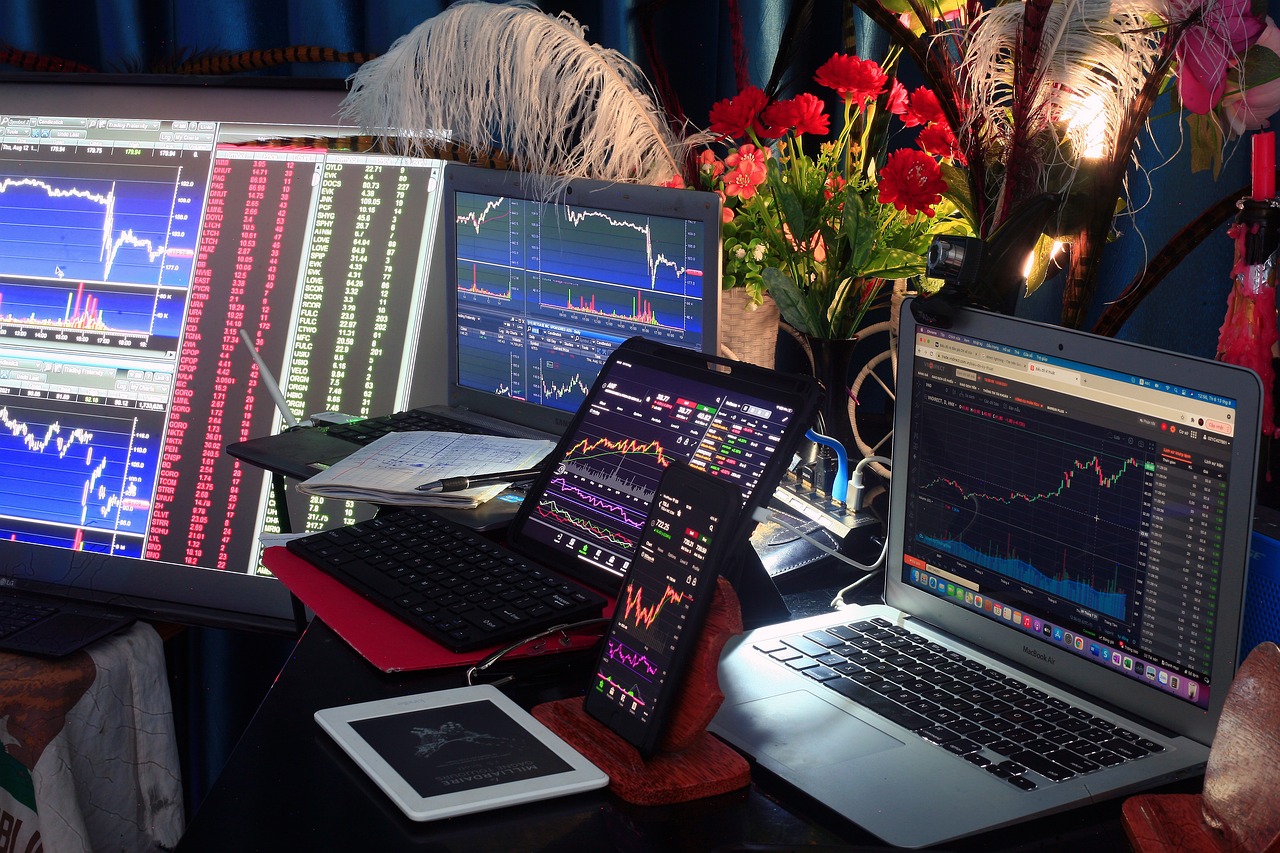
Psychological Aspects of Trading
When it comes to day trading, the psychological mindset of a trader can be just as important as any technical analysis or market strategy. Why, you ask? Because trading isn't just about numbers and charts; it's about making split-second decisions under pressure. Imagine being in a high-stakes game where every move counts, and one wrong decision could lead to significant losses. This is the reality for day traders, and understanding the psychological aspects of trading is crucial for success.
One of the most common psychological challenges traders face is the overwhelming influence of fear and greed. Fear can paralyze decision-making, leading to missed opportunities or premature exits from trades. On the other hand, greed can push traders to take unnecessary risks, chasing after profits without a solid plan. Both emotions can cloud judgment and derail even the most well-thought-out strategies. So, how can traders overcome these emotional hurdles? It starts with recognizing them and implementing techniques to keep them in check.
Developing a solid trading plan is essential. This plan should not only outline the technical aspects of trading but also include psychological strategies. For instance, setting clear profit and loss targets can help mitigate the emotional rollercoaster that often accompanies trading. By having predetermined points at which to take profits or cut losses, traders can reduce the influence of fear and greed on their decisions. Additionally, maintaining a trading journal can be incredibly beneficial. By documenting trades and the emotions felt during each decision, traders can identify patterns in their behavior and work on improving their emotional responses over time.
Another effective strategy is to establish a consistent trading routine. A routine can provide structure and discipline, helping traders to stay focused and calm amidst the chaos of the market. This routine might include pre-market preparation, setting aside specific times for trading, and regular breaks to avoid burnout. Just like an athlete follows a training regimen to enhance performance, a trader can benefit from a well-defined routine that supports their mental state and trading effectiveness.
Moreover, it’s essential to recognize that trading is not solely about winning. Accepting that losses are a part of the game can help traders maintain a balanced perspective. Instead of viewing losses as failures, consider them as learning opportunities. This mindset shift can reduce the emotional weight of losing trades and encourage a more analytical approach to future decisions.
To further aid in managing psychological aspects, traders can utilize various techniques, such as meditation or mindfulness practices. These practices can help clear the mind, reduce stress, and improve focus, allowing traders to make more rational decisions. Just like a clear sky allows for better visibility, a calm mind enhances decision-making capabilities.
In conclusion, the psychological aspects of trading are integral to a trader's success. By understanding and managing emotions like fear and greed, establishing a structured routine, and fostering a learning mindset, traders can navigate the tumultuous waters of day trading with greater ease and effectiveness. Remember, trading is not just a test of skill; it's a test of mental fortitude.
- What are the key psychological challenges in trading? Fear and greed are the two main emotions that can significantly impact trading decisions.
- How can I manage my emotions while trading? Develop a trading plan, set clear targets, maintain a trading journal, and establish a consistent routine.
- Is it normal to feel anxious while trading? Yes, it's completely normal. Trading can be stressful, and managing anxiety is part of the process.
- What techniques can help improve focus while trading? Mindfulness practices, meditation, and taking regular breaks can enhance focus and reduce stress.

Overcoming Fear and Greed
When it comes to day trading, fear and greed are like the two sides of a coin. They can either propel you to great heights or drag you down into chaos. Imagine standing on the edge of a cliff, peering into the abyss below; that’s what trading can feel like when emotions take the wheel. Fear often creeps in when a trade goes against you, whispering doubts and pushing you to exit prematurely. On the other hand, greed can lead you to chase after profits, causing you to hold onto losing trades longer than you should. So, how do we conquer these formidable foes?
First and foremost, it’s crucial to develop a trading plan. A well-structured plan acts like a roadmap, guiding you through the tumultuous landscape of the market. Your plan should outline your entry and exit strategies, along with your risk tolerance. By having a clear set of rules, you can reduce the influence of fear and greed on your decision-making process. When you stick to your plan, you're less likely to be swayed by the emotional rollercoaster that trading can induce.
Next, consider implementing mindfulness techniques. Being aware of your emotions and recognizing when fear or greed is taking hold can help you regain control. Techniques like deep breathing, meditation, or even taking a short break from trading can provide the clarity you need to refocus. Just like an athlete visualizes their performance before a big game, you can visualize your trades and the outcomes you desire, which can help reinforce a positive mindset.
Another effective strategy is to use journaling. Keeping a trading journal not only helps you track your trades but also allows you to reflect on your emotional state during each transaction. By documenting your thoughts and feelings, you can identify patterns that reveal how fear and greed influence your decisions. Over time, this self-awareness can lead to better emotional regulation and improved trading performance.
Additionally, it’s beneficial to set realistic goals. Many traders fall into the trap of setting overly ambitious targets, which can lead to frustration and emotional distress. Instead, focus on achievable milestones that celebrate small victories. For instance, instead of aiming for a 50% return in a week, aim for a steady 2% increase. This approach not only builds confidence but also helps mitigate the emotional turmoil associated with unrealistic expectations.
Lastly, consider the power of community. Engaging with fellow traders can provide support and perspective. Sharing experiences, discussing strategies, and even venting frustrations can help normalize the emotional challenges of trading. Remember, you’re not alone in this journey; many traders struggle with the same feelings. By fostering connections with others, you can gain insights and encouragement that bolster your resolve against fear and greed.
In summary, overcoming fear and greed in day trading is not just about mastering the markets; it’s about mastering yourself. By developing a solid trading plan, practicing mindfulness, journaling your experiences, setting realistic goals, and engaging with a supportive community, you can turn these emotional challenges into stepping stones for success. So, gear up and take control of your trading journey—your future self will thank you!
- What is the best way to manage fear in trading?
Managing fear involves having a solid trading plan and practicing mindfulness techniques to stay grounded during volatile market conditions. - How can I prevent greed from affecting my trades?
Setting realistic goals and adhering to your trading plan can help prevent greed from influencing your decision-making. - Is journaling really effective for traders?
Yes, journaling helps traders reflect on their emotions and decisions, leading to greater self-awareness and improved trading strategies. - Can I trade successfully without a community?
While it’s possible, having a supportive community can provide valuable insights and encouragement, making the trading journey less isolating.

Building a Trading Routine
Establishing a consistent trading routine is not just a good idea; it's a game-changer for anyone serious about day trading. Think of it as your daily workout for the mind—just like you wouldn’t skip leg day if you wanted to build muscle, you shouldn’t skip your trading routine if you want to build wealth. A well-structured routine can help you stay disciplined, manage your time efficiently, and ultimately improve your trading performance.
So, what should a solid trading routine look like? First off, it’s essential to have a clear plan that outlines your trading goals, preferred strategies, and the markets you want to focus on. A good starting point is to dedicate specific times of the day for trading activities. For instance, you might decide to analyze the market in the early morning, execute trades during peak hours, and review your performance in the evening. This structured approach helps you stay organized and focused.
Moreover, consider incorporating the following elements into your daily routine:
- Market Analysis: Spend time reviewing market trends and news that could impact your trades. This will keep you informed and ready to adapt to any changes.
- Review Past Trades: Take a moment to analyze your previous trades. What worked? What didn’t? This reflection can provide valuable insights for future trades.
- Set Daily Goals: Establish clear, achievable goals for each trading session. This could be a specific profit target or the number of trades you want to execute.
- Mindfulness and Mental Preparation: Before diving into trading, take a few minutes to clear your mind. Techniques like meditation or deep breathing can help you maintain focus and reduce anxiety.
Additionally, it’s crucial to remain adaptable. The markets are constantly changing, and what works today might not work tomorrow. Regularly revisit and adjust your routine based on your performance and market conditions. This flexibility can be the difference between a successful trader and one who struggles.
Finally, don’t forget about the importance of rest. Trading can be mentally exhausting, and burnout can lead to poor decision-making. Ensure you schedule breaks and allow yourself time to recharge. Just as athletes need rest days to perform at their best, so do traders.
In summary, building a trading routine is about creating a sustainable practice that fosters discipline, reduces stress, and enhances performance. By integrating structured analysis, reflection, goal-setting, and mindfulness into your daily activities, you set yourself up for success in the fast-paced world of day trading.
1. How long should my trading routine be?
Your trading routine can be as long or as short as you need it to be, but consistency is key. Aim for at least 1-2 hours of focused trading activities each day.
2. What if I can’t stick to my routine?
It’s normal to struggle with consistency at first. Start small, and gradually build your routine. Keep track of your progress and adjust as necessary.
3. Can I trade without a routine?
Technically, yes, but it’s highly discouraged. Trading without a routine can lead to impulsive decisions and increased risk of losses.
4. How can I stay motivated to stick to my routine?
Setting clear goals and regularly reviewing your progress can keep you motivated. Celebrate small wins, and remember why you started trading in the first place.
Frequently Asked Questions
- What is day trading?
Day trading involves buying and selling financial instruments within the same trading day. Traders aim to capitalize on small price movements, often using leverage to enhance their potential returns. It requires a solid understanding of market trends and technical analysis.
- How can I identify market trends?
Identifying market trends involves analyzing price movements over time. Traders often look for upward trends (bull markets), downward trends (bear markets), and sideways movements. Tools like moving averages and trend lines can help visualize these trends effectively.
- What are some essential technical analysis tools?
Some essential technical analysis tools include moving averages, Relative Strength Index (RSI), and candlestick patterns. These tools help traders make informed decisions by providing insights into price trends, momentum, and potential reversals.
- What are support and resistance levels?
Support and resistance levels are price points where the market tends to reverse direction. Support levels indicate where buying interest may emerge, while resistance levels signify selling pressure. Identifying these levels is crucial for predicting potential price movements.
- How do I manage risk in day trading?
Effective risk management involves setting stop-loss orders, diversifying your trading assets, and determining your risk tolerance. By implementing these strategies, traders can minimize losses and protect their capital while maximizing potential gains.
- What is a stop-loss order?
A stop-loss order is a predefined price level at which a trader will exit a losing position to prevent further losses. Setting effective stop-loss levels is essential for managing risk and ensuring that emotions do not dictate trading decisions.
- How can I overcome fear and greed in trading?
Overcoming fear and greed involves maintaining a disciplined approach to trading. Techniques such as developing a trading plan, setting realistic goals, and practicing mindfulness can help traders manage these powerful emotions and make rational decisions.
- Why is building a trading routine important?
Building a trading routine is crucial for developing consistency and discipline. A well-structured routine helps traders stay focused, manage their time effectively, and adhere to their trading strategies, ultimately leading to improved performance.





